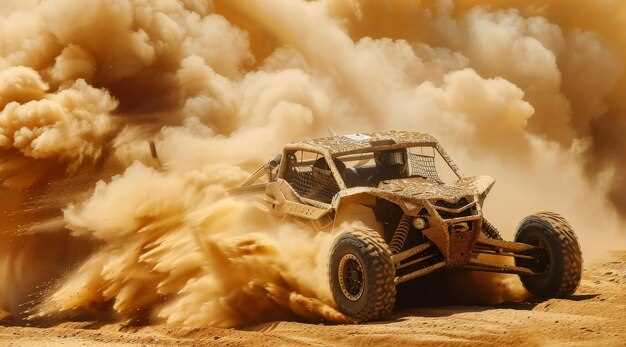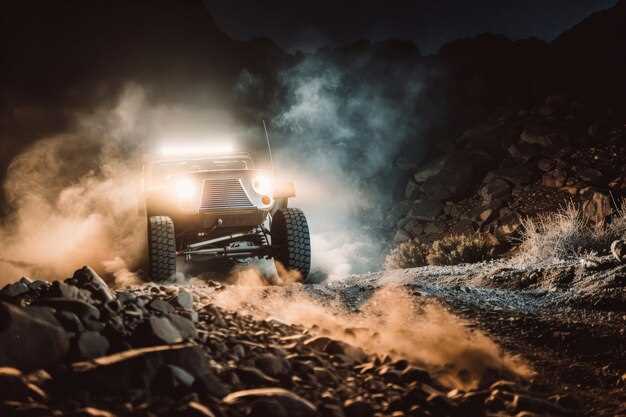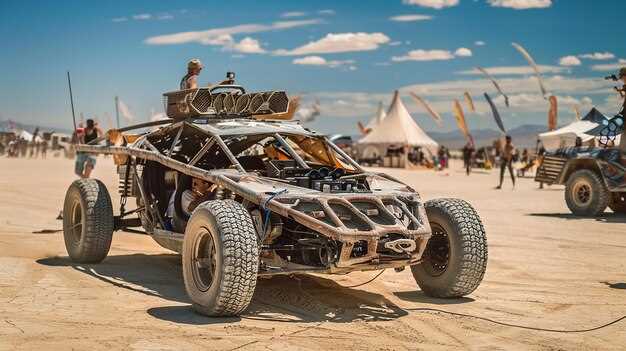
In the world of desert racing, the right vehicle can make all the difference between triumph and defeat. The unique challenges of sand dunes, rocky terrains, and extreme weather conditions demand a specific build that optimizes performance and durability. Champion desert racers invest significant time and resources into selecting and customizing their vehicles to ensure they can handle the harshest environments while maintaining speed and agility.
The vehicles used by these elite athletes are a testament to the innovations in automotive engineering and design. From specially reinforced frames to advanced suspension systems, each component is carefully crafted to withstand the rigors of racing. Personalizing a vehicle’s build allows racers to fine-tune their machines to suit their driving styles and preferences, leading to improved handling and power delivery on the treacherous desert tracks.
Choosing the right vehicle is not just about performance; it is also about building a personal connection with the machine. The bond between a racer and their vehicle often defines their success on the course. With a deep understanding of their vehicle’s capabilities, champion racers push the limits of performance, turning these powerful machines into extensions of their own abilities. This article explores the top vehicles that dominate the desert racing scene, highlighting their unique features and the personal touches that racers implement to gain that competitive edge.
Key Features of Winning Race Trucks
Winning race trucks are engineered for both speed and durability, making them a critical component in off-road racing events. One of the most significant features is their robust suspension system. These trucks are equipped with long-travel shock absorbers and coil-over setups, allowing them to absorb rough terrain shocks while maintaining stability and control at high speeds.
An essential aspect of a successful race truck is its powertrain. High-performance engines are typically tuned for maximum horsepower and torque, enabling quick acceleration and impressive top speeds. Additionally, advanced transmission systems enhance power delivery, optimizing performance during races.
Weight reduction is crucial in truck build, thus many teams utilize lightweight materials such as aluminum and carbon fiber in their construction. This not only improves speed but also enhances agility, as lighter trucks can maneuver more effectively through challenging courses.
Another important feature is the truck’s aerodynamics. Winning race trucks often incorporate specialized body designs to minimize drag, enabling faster speeds while maintaining stability. Features like front splitters and rear spoilers help manage airflow, ensuring the vehicle remains grounded during high-speed runs.
Safety is paramount, so race trucks are fitted with a robust roll cage and safety harnesses to protect drivers in the event of an accident. This is complemented by high-quality braking systems that provide reliable stopping power under extreme conditions.
Lastly, the customization and tuning options available for race trucks allow teams to fine-tune their vehicles for specific race conditions. This adaptability can make a significant difference in performance. With these key features, winning race trucks are built not just for competition, but for victory.
Personal Builds: Customizing Your Desert Racer

Creating a personalized desert racer involves understanding the unique challenges of racing in desert terrains. Each build should reflect the owner’s preferences, needs, and racing style.
Here are essential aspects to consider when customizing your desert racer:
- Chassis: Start with a strong, lightweight chassis that can withstand harsh conditions. Consider materials like tubular steel or aluminum for optimal durability and performance.
- Suspension: Invest in a high-quality suspension system to handle rough terrain. Customizable shock absorbers and longer travel suspension will provide better control and comfort during races.
- Engine: Choose a powerful engine that can deliver high horsepower while remaining reliable. Turbocharged options can offer significant boosts in performance, critical for racing.
- Tires: Select appropriate tires designed for sandy and rocky surfaces. Off-road tires with deep treads will provide better traction and stability.
- Weight Reduction: Focus on minimizing weight without compromising safety. Utilize lightweight components and remove unnecessary parts to enhance speed and agility.
- Fuel System: Customizing the fuel system for efficiency can optimize the racer’s performance. Consider high-flow fuel pumps and larger injectors to support increased horsepower.
- Aerodynamics: Incorporate elements that improve aerodynamic performance. Features like spoilers and aerodynamic bumpers can reduce drag and increase speed.
Building a personal desert racer requires careful planning, technical knowledge, and a clear vision. Engaging with experienced builders and participating in forums can provide valuable insights and inspiration.
Ultimately, a customized build not only enhances race performance but also reflects the racer’s identity and passion for the sport.
Maintenance Tips for Peak Performance in Desert Racing

For any truck built for desert racing, ensuring peak performance requires diligent maintenance. Proper care not only enhances speed but also improves durability during intense conditions.
Regular Inspections: Frequently inspect critical components such as the suspension, steering, and braking systems. These elements endure significant stress in desert terrain, leading to potential failures if neglected. Any signs of wear should be addressed immediately to keep your race vehicle in top shape.
Fluid Checks: Monitoring oil, coolant, and transmission fluid levels is essential. These fluids are vital for engine cooling and overall performance. Regularly change the oil and other fluids according to your truck’s build specifications to ensure optimal operation.
Tire Maintenance: Desert racing places unique demands on tires. Check for proper inflation, tread wear, and damage before each race. Consider using specialized tires designed for sand and rocky landscapes to maximize grip and control.
Electrical System Care: A reliable electrical system is crucial for race trucks. Examine all wiring and connections for corrosion or damage, especially in harsh environments. Ensure the battery is secure and free of debris to avoid unexpected failures during races.
Performance Upgrades: Evaluate and upgrade components that enhance speed and handling, such as exhaust systems and engine tuning. Customizing specific aspects of your truck’s build can lead to improved acceleration and maneuverability on challenging courses.
Post-Race Maintenance: After each race, conduct a thorough inspection to identify any potential issues. Cleaning the truck and checking for loose parts or damage will help maintain its performance and longevity. Address any problems immediately to prepare for the next race.
By adhering to these maintenance tips, racers can ensure their trucks remain competitive and capable of withstanding the rigors of desert racing.




